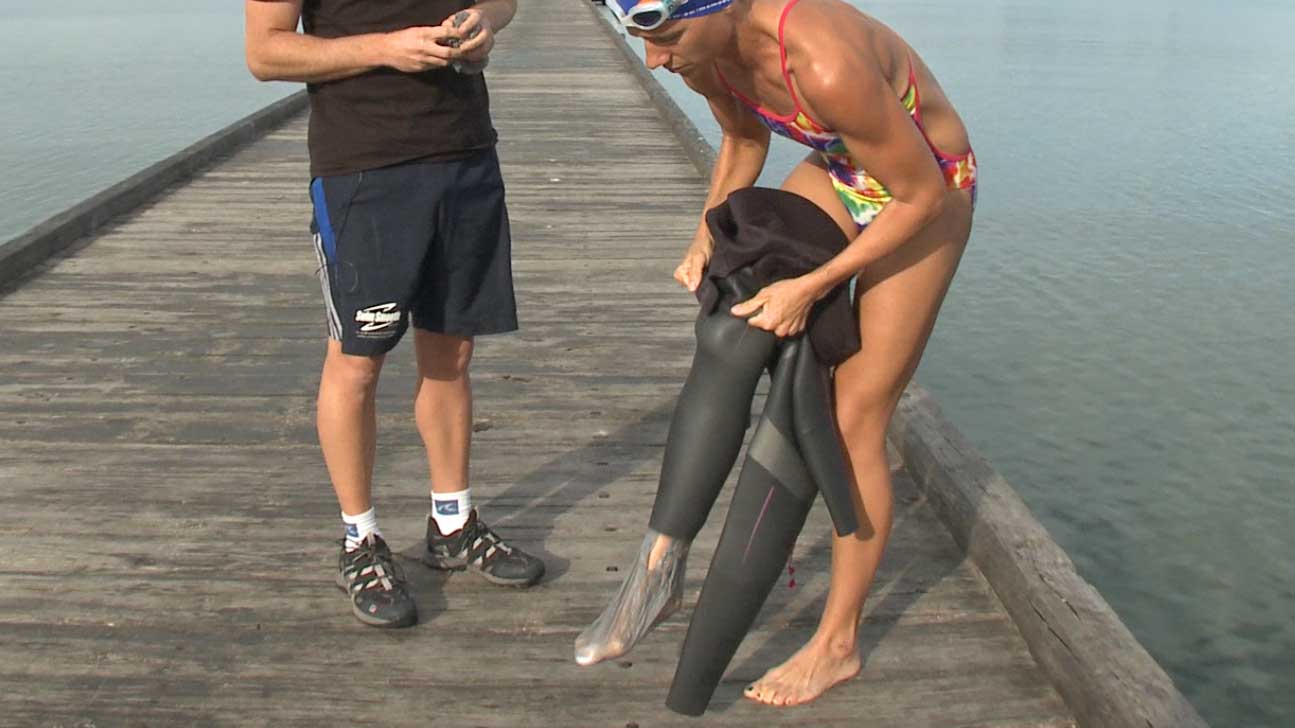Here are a few precautions we take that explain how we make the swim course as safe as possible
Time trial start
The time trial start consists of starting one person at a time at approximately 2-second intervals. Participants will start with their assigned wave (eg. Intermediate, Men 40 & Over) and will line up within their wave on a first-come basis. We know open water swim courses can be intimidating, so we use this method to give the participants their own space in the water. Before each race morning, we clear any debris to ensure you don’t run into anything unexpected during your swim portion. Pro tip: build mental toughness during training and use those strategies on race day.
Swim caps
We provide swim caps to our participants according to their age group upon registration. These are the typical swim caps you would use. They are used during Kerrville Tri to keep you safe and distinguish the participants according to age group. Per USAT rules, the swim caps are always brightly colored to allow lifeguards and other participants to see you throughout the swim course.
Buoys
It can be easy to become disoriented during an open water swim, especially if you’re new to the sport. You can always count on large, brightly colored buoys as markers to keep you safe and on track during the swim. The buoys are there to help you stay on course and make you feel more comfortable in the water. Utilize the buoys by thinking of the course in segments and swim in straight lines from buoy to buoy. Pro tip: follow these 6 tips and take your training from the pool to open water before your race.
Lifeguards
If for any reason you should need help during the swim portion, we have kayaks with lifeguards throughout the swim course. To ensure our participants feel safe, we have lifeguards on Saturday and Sunday. Most of the lifeguards will be on kayaks. Some will be onshore in case of emergency. Knowing the lifeguards are out there will make you feel safe and extra secure when taking on the Smokin’ Good Tri swim course.
Jet skis
There are also jet skis in the water should anyone need aid quickly during the swim portion. With the lifeguards on kayaks stationed throughout the course and jet skis on standby, participants should feel safe while in the water. Pro tip: If you’re in the area before race weekend, get out to Nimitz Lake to do a mock swim!
With all these measures taken to keep swimmers safe, there shouldn’t be anything preventing you from wanting to participate in Kerrville Tri!





 8. The wetsuit should feel tight around your neck causing the wetsuit to move with the neck. If your neck moves freely inside of the wetsuit, readjust the collar. If you choose to use lubrication products, make sure it is a non-petroleum based lubricant.
8. The wetsuit should feel tight around your neck causing the wetsuit to move with the neck. If your neck moves freely inside of the wetsuit, readjust the collar. If you choose to use lubrication products, make sure it is a non-petroleum based lubricant.